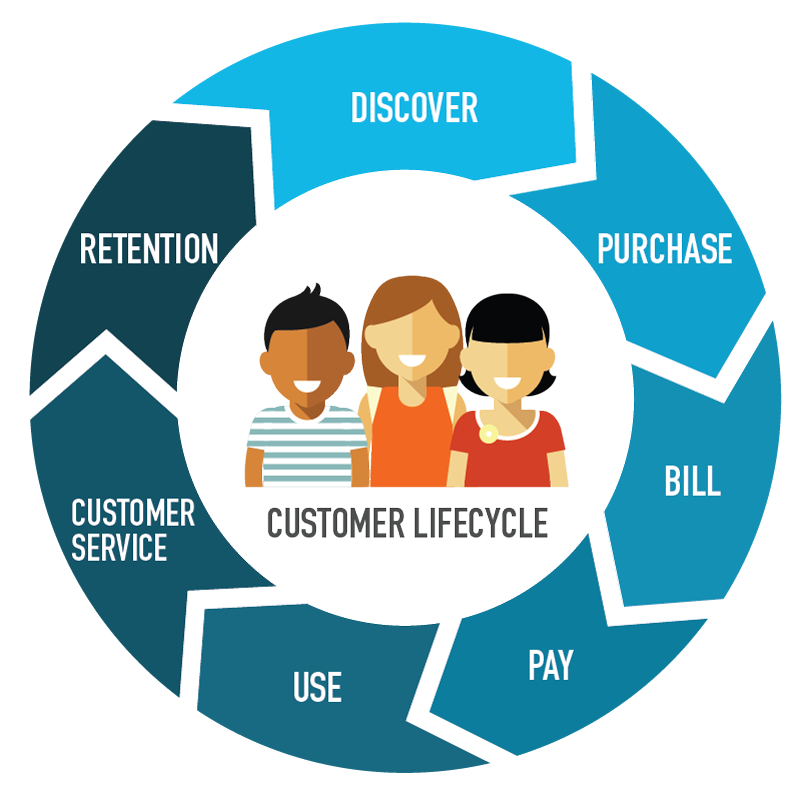It is easy to get caught up in a new product idea or feature. Designing with a “build-it” and they will come approach, is not the formula to delight your customers. If you want to have a competitive edge, you need to shift your mindset to focus on your customers’ needs, wants and pain points. To support and drive this mindset within your organization requires adopting a customer-centric approach.
Many companies will have marketing materials stating how important their customers are, but really the corporate culture focuses on themselves. A customer-centric approach runs deeper. It is more than just a marketing activity. It means that customers are core in the decision-making process. The results of these decisions may require adjustments to business processes to ensure that the customer is and remains the priority. It means creating a positive experience before and after the sale to ensure loyalty and repeat business.
A study conducted by Deloitte and Touche indicated that customer-centric companies were 60% more profitable. To be a contender in today’s marketplace, more and more companies are adopting this approach. Here are some best practices for building a customer-centric organization.
Know Your Customer
To be able to create a brand to support your customers, do you really know who they are? Having a clear understanding means that everyone from the product designers, developers to support personnel are all on the same page where the customer is concerned. This is one of the key strategies for developing a customer-centric organization.
You may have your buyers’ persona defined but do you have the data to back it up. Data can give in-depth knowledge of the various customer segments who use your products or services. The data provides insight into their preferences and spending habits allowing you to tailor a product or service to their needs.
Establish a Customer-Centric Design Culture

Another best practice to creating a customer-centric culture is to be passionate about putting the customer first. The necessary mindset behaviors and processes need to be reflected throughout the organization and not just from front-facing personnel. A well-meaning strategy and vision will not produce a customer-centric environment if there is not full buy-in by the upper executives. The right mindset must be exhibited from the top down with a clear vision and strategy. Lack of clarity and shared understanding is one of the pitfalls of organizations striving to become customer-centric.
You need to create awareness of the value of customer satisfaction and the impact on the business. Some companies achieve this by sharing customer feedback. Other companies may display posters and banners promoting how customer satisfaction is core to the business to help build a culture to encourage the right attitudes and behaviors. Employees who possess the right attitudes and behaviors will go out of their way to re-enforce and continually build on a positive customer experience. The majority of the organization needs to believe in the value and benefits of the customer-centric approach and must understand that customer satisfaction is core to business success.
Ensure You Deliver a Positive Customer Experience

(source: https://www.incognito.com/blog/enhancing-customer-care-part-6-discover/)
To deliver a positive customer experience, are key touchpoints identified and defined in the customer journey? Do you know every interaction? This includes before and after they make a purchase. A customer journey map captures and identifies everything from the interactions in the company’s website to interactions with support. These touchpoints should be smooth and not create confusion. They are also an opportunity to take action to continuously improve the customer experience.
Each touchpoint in the customer lifecycle should be documented to present the framework for your business and have an assigned business owner. The business owner is accountability for the customer experience at each touchpoint. When an enhancement or improvement needs to be made, the business owner can make an assessment ensuring that customer satisfaction is being met and making the most impact on the perception of the business.
There are other customer touchpoints in the organization aside from the front-facing personnel that can have an impact on the their experience such as IT, Procurement and HR. Everyone needs to be involved.
Foster an Environment for Continuous Product Improvement
With today’s digital channels, customers are quick to express their dissatisfaction and negative experiences. Whether the negative interaction is with a support person or product, digital channels such as Twitter and Facebook, provide real-time feedback and can have a significant impact on your business. The timeliness and responsiveness on what can be a customer deterrent are important. This feedback can easily be relayed to management so they can take action to resolve the issue and improve the customer experience.
In addition to the feedback from digital channels, establish clear metrics along customer touchpoints, so the right actions are taken when they are incorporated into the business operations. All implemented metrics need to tie back to the corporate goals and strategy. Two key metrics commonly used are the Net Promoter Score (NPS) and Customer Lifetime Value (CLV)
Conclusion

Becoming a customer-centric organization does take some time to build to ingrain the right attitudes and mindset within its culture. It is a collaborative effort with teams working as one, continuously striving to put the customer first. If you want to grow, transforming the business to become customer-centric is the path to take.
Implementing a customer-centric approach does not mean you need to overhaul your business. Assess the areas that have the greatest impact on the customer experience and evaluate what modifications can be done to improve the journey. Incremental changes to policies and procedures can help support transformational change. Whatever is implemented you want to see the return on your investment.
Adopting a customer-centric approach allows you to develop a more meaningful relationship with your customers. Upper management needs to set the example and lead the way by making customer satisfaction core in the decision-making process.